- A List of Writing Contests in 2022 | Exciting Prizes!
- Em Dash vs. En Dash vs. Hyphen: When to Use Which
- Book Proofreading 101: The Beginner’s Guide
- Screenplay Editing: Importance, Cost, & Self-Editing Tips
- Screenplay Proofreading: Importance, Process, & Cost
- Script Proofreading: Rates, Process, & Proofreading Tips
- Manuscript Proofreading | Definition, Process & Standard Rates
- Tips to Write Better if English Is Your Second Language
- Novel Proofreading | Definition, Significance & Standard Rates
- Top 10 Must-Try Writing Prompt Generators in 2024
- 100+ Creative Writing Prompts for Masterful Storytelling
- Top 10 eBook Creator Tools in 2024: Free & Paid
- 50 Timeless and Unforgettable Book Covers of All Time
- What Is Flash Fiction? Definition, Examples & Types
- 80 Enchanting Christmas Writing Prompts for Your Next Story
- Your Guide to the Best eBook Readers in 2024
- Top 10 Book Review Clubs of 2025 to Share Literary Insights
- 2024’s Top 10 Self-Help Books for Better Living
- Writing Contests 2023: Cash Prizes, Free Entries, & More!
- What Is a Book Teaser and How to Write It: Tips and Examples
- Audiobook vs. EBook vs. Paperback in 2024: (Pros & Cons)
- How to Get a Literary Agent in 2024: The Complete Guide
- Alpha Readers: Where to Find Them and Alpha vs. Beta Readers
- Author Branding 101: How to Build a Powerful Author Brand
- A Guide on How to Write a Book Synopsis: Steps and Examples
- How to Write a Book Review (Meaning, Tips & Examples)
- 50 Best Literary Agents in the USA for Authors in 2024
- Building an Author Website: The Ultimate Guide with Examples
- Top 10 Paraphrasing Tools for All (Free & Paid)
- Top 10 Book Editing Software in 2024 (Free & Paid)
- What Are Large Language Models and How They Work: Explained!
- Top 10 Hardcover Book Printing Services [Best of 2024]
- 2024’s Top 10 Setting Generators to Create Unique Settings
- Different Types of Characters in Stories That Steal the Show
- Top 10 Screenplay & Scriptwriting Software (Free & Paid)
- 10 Best AI Text Generators of 2024: Pros, Cons, and Prices
- Top 10 Must-Try Character Name Generators in 2024
- 10 Best AI Text Summarizers in 2024 (Free & Paid)
- 2024’s 10 Best Punctuation Checkers for Error-Free Text
- 11 Best Story Structures for Writers (+ Examples!)
- How to Write a Book with AI in 2024 (Free & Paid Tools)
- Writing Contests 2024: Cash Prizes & Free Entries!
- Patchwork Plagiarism: Definition, Types, & Examples
- Simple Resume Formats for Maximum Impact With Samples
- What Is a Complement in a Sentence? (Meaning, Types & Examples)
- What are Clauses? Definition, Meaning, Types, and Examples
- Persuasive Writing Guide: Techniques & Examples
- How to Paraphrase a Text (Examples + 10 Strategies!)
- A Simple Proofreading Checklist to Catch Every Mistake
- Top 10 AI Resume Checkers for Job Seekers (Free & Paid)
- 20 Best Comic Book Covers of All Time!
- How to Edit a Book: A Practical Guide with 7 Easy Steps
- How to Write an Autobiography (7 Amazing Strategies!)
- How to Publish a Comic Book: Nine Steps & Publishing Costs
- Passive and Active Voice (Meaning, Examples & Uses)
- How to Publish a Short Story & Best Publishing Platforms
- What Is Expository Writing? Types, Examples, & 10 Tips
- 10 Best Introduction Generators (Includes Free AI Tools!)
- Creative Writing: A Beginner’s Guide to Get Started
- How to Sell Books Online (Steps, Best Platforms & Tools)
- Top 10 Book Promotion Services for Authors (2025)
- 15 Different Types of Poems: Examples & Insight into Poetic Styles
- 10 Best Book Writing Apps for Writers 2025: Free & Paid!
- Top 10 AI Humanizers of 2025 [Free & Paid Tools]
- How to Write a Poem: Step-by-Step Guide to Writing Poetry
- 100+ Amazing Short Story Ideas to Craft Unforgettable Stories
- The Top 10 Literary Devices: Definitions & Examples
- Top 10 AI Translators for High-Quality Translation in 2025
- Top 10 AI Tools for Research in 2025 (Fast & Efficient!)
- 50 Best Essay Prompts for College Students in 2025
- Top 10 Book Distribution Services for Authors in 2025
- Best 101 Greatest Fictional Characters of All Time
- Top 10 Book Title Generators of 2025
- Best Fonts and Sizes for Books: A Complete Guide
- What Is an Adjective? Definition, Usage & Examples
- How to Track Changes in Google Docs: A 7-Step Guide
- Best Book Review Sites of 2025: Top 10 Picks
- Parts of a Book: A Practical, Easy-to-Understand Guide
- What Is an Anthology? Meaning, Types, & Anthology Examples
- How to Write a Book Report | Steps, Examples & Free Template
- 10 Best Plot Generators for Engaging Storytelling in 2025
- 30 Powerful Poems About Life to Inspire and Uplift You
- What Is a Poem? Poetry Definition, Elements, & Examples
- Metonymy: Definition, Examples, and How to Use It In Writing
- How to Write a CV with AI in 9 Steps (+ AI CV Builders)
- What Is an Adverb? Definition, Types, & Practical Examples
- How to Create the Perfect Book Trailer for Free
- Top 10 Book Publishing Companies in 2025
- 14 Punctuation Marks: A Guide on How to Use with Examples!
- Translation Services: Top 10 Professional Translators (2025)
- 10 Best Free Online Grammar Checkers: Features and Ratings
- 30 Popular Children’s Books Teachers Recommend in 2025
- 10 Best Photobook Makers of 2025 We Tested This Year
- Top 10 Book Marketing Services of 2025: Features and Costs
- Top 10 Book Printing Services for Authors in 2025
- 10 Best AI Detector Tools in 2025
- Audiobook Marketing Guide: Best Strategies, Tools & Ideas
- 10 Best AI Writing Assistants of 2025 (Features + Pricing)
- How to Write a Book Press Release that Grabs Attention
- 15 Powerful Writing Techniques for Authors in 2025
- Generative AI: Types, Impact, Advantages, Disadvantages
- Top 101 Bone-Chilling Horror Writing Prompts
- 25 Figures of Speech Simplified: Definitions and Examples
- Top 10 AI Rewriters for Perfect Text in 2025 (Free & Paid)
- Best EBook Cover Design Services of 2025 for Authors
- Writing Contests 2025: Cash Prizes, Free Entries, and More!
- Top 10 Book Writing Software, Websites, and Tools in 2025
- National Novel Writing Month (NaNoWriMo)
- Best Horror Books of All Time (Must-Read List)
- What is a Book Copyright Page?
- Final Checklist: Is My Article Ready for Submitting to Journals?
- 8 Pre-Publishing Steps to Self-Publish Your Book
- 7 Essential Elements of a Book Cover Design
- How to Copyright Your Book in the US, UK, & India
- Beta Readers: Why You Should Know About Them in 2024
- How to Publish a Book in 2024: Essential Tips for Beginners
- Book Cover Design Basics: Tips & Best Book Cover Ideas
- Why and How to Use an Author Pen Name: Guide for Authors
- How to Format a Book in 2025: 7 Tips for Book Formatting
- What is Manuscript Critique? Benefits, Process, & Cost
- 10 Best Ghostwriting Services for Authors in 2025
- ISBN Guide 2025: What Is an ISBN and How to Get an ISBN
- Best Manuscript Editing Services of 2025
- How to Hire a Book Editor in 5 Practical Steps
- Self-Publishing Options for Writers
- How to Promote Your Book Using a Goodreads Author Page
- 7 Essential Elements of a Book Cover Design
- What Makes Typesetting a Pre-Publishing Essential for Every Author?
- 4 Online Publishing Platforms To Boost Your Readership
- Typesetting: An Introduction
- Quick Guide to Novel Editing (with a Self-Editing Checklist)
- Self-Publishing vs. Traditional Publishing: 2024 Guide
- How to Publish a Book in 2024: Essential Tips for Beginners
- How to Publish a Book on Amazon: 8 Easy Steps [2024 Update]
- What are Print-on-Demand Books? Cost and Process in 2024
- What Are the Standard Book Sizes for Publishing Your Book?
- How to Market Your Book on Amazon to Maximize Sales in 2024
- Top 10 Hardcover Book Printing Services [Best of 2024]
- How to Find an Editor for Your Book in 8 Steps (+ Costs!)
- What Is Amazon Self-Publishing? Pros, Cons & Key Insights
- Manuscript Editing in 2024: Elevating Your Writing for Success
- Know Everything About How to Make an Audiobook
- A Simple 14-Point Self-Publishing Checklist for Authors
- How to Write an Engaging Author Bio: Tips and Examples
- Book Cover Design Basics: Tips & Best Book Cover Ideas
- How to Publish a Comic Book: Nine Steps & Publishing Costs
- Why and How to Use an Author Pen Name: Guide for Authors
- How to Sell Books Online (Steps, Best Platforms & Tools)
- A Simple Guide to Select the Best Self-Publishing Websites
- 10 Best Book Cover Design Services of 2025: Price & Ratings
- How Much Does It Cost to Self-Publish a Book in 2025?
- Quick Guide to Book Editing [Complete Process & Standard Rates]
- How to Distinguish Between Genuine and Fake Literary Agents
- What is Self-Publishing? Everything You Need to Know
- How to Copyright a Book in 2025 (Costs + Free Template)
- The Best eBook Conversion Services of 2025: Top 10 Picks
- 10 Best Self-Publishing Companies of 2025: Price & Royalties
- 10 Best Photobook Makers of 2025 We Tested This Year
- Book Cover Types: Formats, Bindings & Styles
- ISBN Guide 2025: What Is an ISBN and How to Get an ISBN
- A Beginner’s Guide on How to Self Publish a Book (2025)
- Index in a Book: Definition, Purpose, and How to Use It
- How to start your own online publishing company?
- 8 Tips To Write Appealing Query Letters
- Self-Publishing vs. Traditional Publishing: 2024 Guide
- How to Publish a Book in 2024: Essential Tips for Beginners
- What are Print-on-Demand Books? Cost and Process in 2024
- How to Write a Query Letter (Examples + Free Template)
- Third-person Point of View: Definition, Types, Examples
- How to Write an Engaging Author Bio: Tips and Examples
- How to Publish a Comic Book: Nine Steps & Publishing Costs
- Top 10 Book Publishing Companies in 2025
- 10 Best Photobook Makers of 2025 We Tested This Year
- Book Cover Types: Formats, Bindings & Styles
- ISBN Guide 2025: What Is an ISBN and How to Get an ISBN
- Index in a Book: Definition, Purpose, and How to Use It
- How to Create Depth in Characters
- Starting Your Book With a Bang: Ways to Catch Readers’ Attention
- Research for Fiction Writers: A Complete Guide
- Short stories: Do’s and don’ts
- How to Write Dialogue: 7 Rules, 5 Tips & 65 Examples
- What Are Foil and Stock Characters? Easy Examples from Harry Potter
- How To Write Better Letters In Your Novel
- On Being Tense About Tense: What Verb Tense To Write Your Novel In
- How To Create A Stellar Plot Outline
- How to Punctuate Dialogue in Fiction
- On Being Tense about Tense: Present Tense Narratives in Novels
- The Essential Guide to Worldbuilding [from Book Editors]
- What Is Point of View? Definition, Types, & Examples in Writing
- How to Create Powerful Conflict in Your Story | Useful Examples
- How to Write a Book: A Step-by-Step Guide
- How to Write a Short Story in 6 Simple Steps
- How to Write a Novel: 8 Steps to Help You Start Writing
- What Is a Stock Character? 150 Examples from 5 Genres
- Joseph Campbell’s Hero’s Journey: Worksheet & Examples
- Novel Outline: A Proven Blueprint [+ Free Template!]
- Character Development: 7-Step Guide for Writers
- What Is NaNoWriMo? Top 7 Tips to Ace the Writing Marathon
- What Is the Setting of a Story? Meaning + 7 Expert Tips
- What Is a Blurb? Meaning, Examples & 10 Expert Tips
- What Is Show, Don’t Tell? (Meaning, Examples & 6 Tips)
- How to Write a Book Summary: Example, Tips, & Bonus Section
- How to Write a Book Description (Examples + Free Template)
- 10 Best Free AI Resume Builders to Create the Perfect CV
- A Complete Guide on How to Use ChatGPT to Write a Resume
- 10 Best AI Writer Tools Every Writer Should Know About
- How to Write a Book Title (15 Expert Tips + Examples)
- 100 Novel and Book Ideas to Start Your Book Writing Journey
- Exploring Writing Styles: Meaning, Types, and Examples
- Mastering Professional Email Writing: Steps, Tips & Examples
- How to Write a Screenplay: Expert Tips, Steps, and Examples
- Business Proposal Guide: How to Write, Examples and Template
- Different Types of Resumes: Explained with Tips and Examples
- How to Create a Memorable Protagonist (7 Expert Tips)
- How to Write an Antagonist (Examples & 7 Expert Tips)
- Writing for the Web: 7 Expert Tips for Web Content Writing
- 10 Best AI Text Generators of 2024: Pros, Cons, and Prices
- What are the Parts of a Sentence? An Easy-to-Learn Guide
- What Is Climax Of A Story & How To Craft A Gripping Climax
- What Is a Subject of a Sentence? Meaning, Examples & Types
- Object of a Sentence: Your Comprehensive Guide
- What Is First-Person Point of View? Tips & Practical Examples
- Second-person Point of View: What Is It and Examples
- 10 Best AI Essay Outline Generators of 2024
- Third-person Point of View: Definition, Types, Examples
- The Importance of Proofreading: A Comprehensive Overview
- Patchwork Plagiarism: Definition, Types, & Examples
- Simple Resume Formats for Maximum Impact With Samples
- The Ultimate Guide to Phrases In English – Types & Examples
- Modifiers: Definition, Meaning, Types, and Examples
- What are Clauses? Definition, Meaning, Types, and Examples
- Persuasive Writing Guide: Techniques & Examples
- What Is a Simile? Meaning, Examples & How to Use Similes
- Mastering Metaphors: Definition, Types, and Examples
- How to Publish a Comic Book: Nine Steps & Publishing Costs
- Essential Grammar Rules: Master Basic & Advanced Writing Skills
- Benefits of Using an AI Writing Generator for Editing
- Hyperbole in Writing: Definition and Examples
- 15 Best ATS-Friendly ChatGPT Prompts for Resumes in 2025
- How to Write a Novel in Past Tense? 3 Steps & Examples
- 10 Best Spell Checkers of 2025: Features, Accuracy & Ranking
- Foil Character: Definition, History, & Examples
- 5 Key Elements of a Short Story: Essential Tips for Writers
- How to Write a Children’s Book: An Easy Step-by-Step Guide
- How To Write a Murder Mystery Story
- What Is an Adjective? Definition, Usage & Examples
- Metonymy: Definition, Examples, and How to Use It In Writing
- Fourth-Person Point of View: A Unique Narrative Guide
- How to Write a CV with AI in 9 Steps (+ AI CV Builders)
- What Is an Adverb? Definition, Types, & Practical Examples
- How to Write A Legal Document in 6 Easy Steps
- 10 Best AI Story Generators in 2025: Write Captivating Tales
- How to Introduce a Character Effectively
- What is Rhetoric and How to Use It in Your Writing
- How to Write a Powerful Plot in 12 Steps
- How to Make Money as a Writer: Your First $1,000 Guide
- How to Write SEO Content: Tips for SEO-Optimized Content
- Types of Introductions and Examples
- What is a Cliffhanger? Definition, Examples, & Writing Tips
- How to Write Cliffhangers that Keep Readers Hooked!
- How to Write a Romance Novel: Step-by-Step Guide
- Top 10 Writing Tips from Famous Authors
- 10 Best Ghostwriting Services for Authors in 2025
- What is Ghostwriting? Meaning and Examples
- How to Become a Ghostwriter: Complete Career Guide
- How to Write a Speech that Inspires (With Examples)
- Theme of a Story | Meaning, Common Themes & Examples
- 10 Best AI Writing Assistants of 2025 (Features + Pricing)
- Generative AI: Types, Impact, Advantages, Disadvantages
- Worldbuilding Questions and Templates (Free)
- How to Avoid Plagiarism in 2025 (10 Effective Strategies!)
- How to Create Marketing Material
- What Is Worldbuilding? Steps, Tips, and Examples
- How to Avoid AI Detection in 2025 (6 Proven Techniques!)
- What is Syntax in Writing: Definition and Examples
- What is a Subplot? Meaning, Examples & Types
- Writing Challenges Every Writer Should Take
Still have questions? Leave a comment
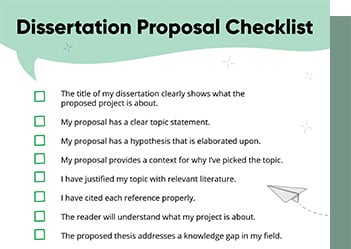
Checklist: Dissertation Proposal
Enter your email id to get the downloadable right in your inbox!
[contact-form-7 id="12425" title="Checklist: Dissertation Proposal"]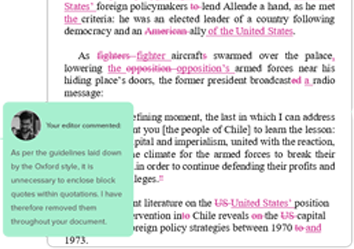
Examples: Edited Papers
Enter your email id to get the downloadable right in your inbox!
[contact-form-7 id="12426" title="Examples: Edited Papers"]Need
Editing and
Proofreading Services?

Quick Guide to Book Editing [Complete Process & Standard Rates]
 May 22, 2025
May 22, 2025 4
min read
4
min read
Writers may think of editors as ruthless butchers of innovation, ideas, and creativity, but that’s not the case. With the right editors, book editing can be an incredibly creative and fruitful process that takes your book to new heights.
Professional book editing elevates your book to global standards of quality. But which types of book editing does your manuscript require? In this article, we’ll tell you the standard book editing rates, the processes involved, and why you can’t rely on self-editing alone. It is also crucial to hire a proofreader in the last stages of the process to ensure all typos and grammar errors are corrected before publication.
Free Professional Editing Sample for Your Book! Get Started
Without further ado, let’s get started!
What is book editing?
Book editing is the process of reviewing a manuscript to improve its quality, clarity, coherence, and overall readability. It removes all types of language and grammatical errors from your manuscript, so your reader receives a polished product. While self-editing is essential, it should not replace a professional edit, which is crucial for ensuring the highest quality before submission to an editor.
Depending on the scope of changes suggested by the editor, there are various types of book editing. They’re mostly defined by the scope of activity the editor has. Large-scale issues of content quality and organization are taken up first, while small-scale issues of grammar and spelling are considered at the end.
There are various types of editing, each with its own unique focus and goals. Developmental editing, for instance, looks at the big picture, addressing content, structure, and overall impact. Copy editing, on the other hand, focuses on the mechanical aspects of writing, such as grammar, punctuation, and consistency. Proofreading is the final step, catching any remaining errors before publication. Understanding these different stages helps authors appreciate the importance of editing in transforming a rough draft into a finished manuscript.
What are the five types of book editing?
The five types of book editing are editorial assessment, developmental editing, line editing, copy editing, and proofreading. Some may tell you that there are seven or four types of editing, but it’s mostly a matter of policy. The five basic processes listed below can be broken down or combined to create a variety of editing steps.
For example, we’ve treated structural editing as a part of developmental editing, but some firms may offer it as a separate service. As long as your book undergoes a structural edit, it doesn’t matter whether it was done under development editing or as a separate process.
Now that we’ve cleared this up, let’s get into the five types of book editing!
1. Editorial assessment
Editing a new book is a layered process, so each manuscript must go through all types of book editing before it’s ready to be published. However, you may need some types of editing more than others, depending on your book and writing style. An editorial assessment finds this out for you.
Although it’s more of a pre-editing check than strictly a type of editing, it’s an essential part of the book editing process.
In an editorial assessment, the editor goes through your manuscript to ascertain the levels and types of editing your work will require. This step is often referred to as a manuscript review, providing crucial feedback before the more intensive editing phase. Based on this, you can also calculate your book editing costs. After this assessment, you should have a clear idea of the editing processes your book needs most and how much you should expect to spend on them.
Typically, an editorial assessment takes about a week and produces a page-long review of your manuscript. You may choose to skip this step, but it can help you optimize your cost of book editing. The editorial assessment ensures that you direct your time, effort, and money in the right places.
The editorial assessment helps you assess the health of your manuscript. It ensures that you’re prepared for the big-picture edits that developmental editing will offer.
2. Developmental editing
Developmental editing, also known as content editing, story editing, or substantive editing, reviews the content, structure, and overall impact of your manuscript. A developmental editor analyses your book as a whole, focusing on the important elements that contribute to the overall structure and cohesiveness of the story.
Let’s consider developmental editing for a cookbook. This will ensure a coherent structure across different recipes, their arrangement in the book, and the overall tonal consistency. For a book of nonfiction essays, on the other hand, the editor will focus on the order of the involved topics and subtopics that make up the manuscript.
Essentially, developmental editing adopts a bird’s-eye view of the broad strokes that make up the landscape of your book. In the case of fiction book editing, this means your plot, characters, story arcs, and narrative development. The editor’s job is to point out plot holes, ineffective story points, or undeveloped character arcs. They will also touch upon your sentence composition, dialogue writing, and word choice (a line editor will take a closer look at these elements).
An expert editor will keep in mind your target audience as well as your genre expectations. Based on the two, they will shape and edit your document, sometimes making major changes to the content. This is why developmental editing comes before copy editing and proofreading.
Once your book has passed the substantive check, it can be taken up by the copy editor.
3. Line editing
Line editing, as the name suggests, is a line-by-line perusal of your manuscript. It focuses on the style, emotion, and unique voice that is apparent in your book. Line edits are crucial for refining your writing style and ensuring clarity in your manuscript. To do this, the editor pays attention to your sentence structure, word choice, grammar, punctuation, and syntax.
Line editing helps make your writing more polished, engaging, and readable. It also aims to make your text clear and coherent, which is somewhat similar to the scope of copy editing. For this reason, these two services are often offered together.
But if you opt for line editing separately, the editor will help you tighten your sentences, eliminate unnecessary repetition or verbosity, and suggest alternative phrasing when needed. In the case of a novel or memoir, this also involves refining your dialogue, pacing, and narrative voice.
So, a line editor ensures that you’re using the right language to communicate with your reader. They help you mold your book into a more engaging read.
4. Copy editing
Copy editing reviews the mechanical aspects of writing to ensure accuracy, consistency, and clarity in your book. A copy editor checks for your spelling, punctuation, and grammar, preserving your unique style while removing obvious language errors. They also examine overall language use, such as repetition and clarity, to ensure polished and coherent writing. Copy editors often maintain various manuals for this purpose, and sometimes create a style sheet that they can refer to while editing your manuscript.
The editor also combs through your paragraphs to maintain internal consistency in your writing. After all, you don’t want to mix up your 1948s with your 1984s! Or, for that matter, have a character be seen in jeans when they were rocking denim shorts just a couple of pages ago!
The mechanical aspects of copy editing help improve the readability of your book, which plays out together with the editor’s attention to the mood and style of your writing. The editor removes redundant words and phrases, offering better alternatives where necessary. They make sure that your intended tone translates clearly and that there aren’t any disruptions or sudden tonal shifts.
In this way, a copy editor gives your manuscript a comprehensive style, preserving your voice while promoting clarity and readability.
5. Proofreading
Proofreading is the last stage in the editing process of a book. It is the final inspection of the final draft. Any work of writing that is released to an audience is always proofread before publishing. Proofing your manuscript removes all minor errors, from a misplaced hyphen to a random inconsistency, from your book.
Believe it or not, the initial types of book editing that help improve your document are likely to add some new errors to it! A proofreader can spot these mistakes due to their experience and skill. Once they’re done with your manuscript, you can be sure that your book is good to go.
In this way, proofreading is the final inspection, removing all errors before your book is released to the world. While other editors might offer a cursory proofread, a standard proofreading round happens after your book has been typeset. A proof copy of your final book is then proofread to ensure the highest quality.
The process of editing
The process of editing typically involves several stages, each crucial for refining the manuscript. It begins with self-editing, where the author reviews and revises their own work to improve its quality and clarity. This step helps identify obvious errors and areas for improvement. Next, beta reading comes into play. Here, the manuscript is shared with a small group of readers who provide feedback and suggestions for enhancement. This honest evaluation from fresh eyes can be invaluable. The final stage is professional editing, where a trained editor meticulously reviews the manuscript to catch any remaining errors and elevate its overall quality. This process is often iterative, involving multiple rounds of revisions and edits to ensure the final product is polished and ready for publication.
Pre-editing steps
Before diving into the formal editing process, authors can take several pre-editing steps to prepare their manuscript. Start by reviewing the manuscript for consistency and accuracy, ensuring that all elements align and make sense. Check for grammatical errors and spelling mistakes, as these can distract from the content. Organize the manuscript logically, making it easy to follow. Utilizing editing software and tools can help identify areas for improvement and streamline the editing process. Additionally, consider hiring an expert editor for an initial review. Their feedback can provide valuable insights and set the stage for a more efficient and effective editing process.
How much does book editing cost?
On average, book editing costs between $1,500 and $3,000. This may vary depending on the type of book editing you opt for as well as your manuscript’s genre, complexity, and length. The cost can also be influenced by the number of drafts required, as working through several drafts with a professional editor can add to the overall expense.
Different entities in the professional book editing arena price their services differently. Some editors charge an hourly rate while others charge a per-page price. The cost of editing a book also varies based on the types of editing you opt for. At PaperTrue, for example, book editing services are offered in three tiers:
If you were wondering how much book editing costs, we hope you have your answer now! You can analyze the editing packages offered by various editing firms and individual editors. You can budget effectively by balancing the needs of your manuscript with offers and packages available out there.
Should you self-edit your book?
You may benefit from going over your manuscript a few times on your own and asking friends and beta readers to do this for you. This can help root out many errors in the manuscript and bring down your book editing fees. However, self-editing does not accomplish much more than this.
You may be tempted to believe that self-editing is the best way forward, but that is not true. No matter how many times you go over your document, some errors are bound to slip in. Readers will easily catch on to these mistakes and end up with a poor impression of your book.
It is easy for editors to spot mistakes in your manuscript because they bring an objective perspective to the page. Professional editors have years of training and experience with different methods and types of book editing. Since you lack the proper training to approach your work with distance and objectivity, you need to hire someone to do that on your behalf. This is the chief reason that self-publishing platforms offer book editing and proofreading as primary pre-publishing services.
Working with a professional
Working with an editor can be a valuable investment for authors aiming to produce a high-quality final product. Editing professionals bring a wealth of training and expertise to the table, capable of identifying areas for improvement across various types of editing, including developmental editing, copy editing, and proofreading. They provide detailed feedback and suggestions, helping authors refine their writing style and voice. When collaborating with a professional editor, authors can expect a thorough and detailed editorial report, outlining suggestions for improvement and necessary revisions. This partnership not only enhances the manuscript but also helps authors grow and develop their writing skills.
Finding an editor
Finding the right editor can be a challenging task, but there are several steps authors can take to ensure they find a qualified and experienced professional. Start by asking for referrals from other writers or publishing professionals. Online directories and databases can also be valuable resources. Review the editor’s portfolio and testimonials to gauge their experience and expertise in your genre or subject area.
Read our article on this topic to get in-depth information: How to Find an Editor for Your Book in 8 Steps (+ Costs!)
An editor’s role is more than just cutting mistakes from your book. Editors provide valuable suggestions from their experience that help perfect your manuscript. If you’re hoping to publish your book and sell copies, hiring an experienced editor is the wise thing to do. At PaperTrue, we provide professional editing and proofreading services to make your manuscript perfect!
Want to read more? Here are some articles for you:

Tanvi

With a foundation in Life Sciences, Tanvi enjoys curating technical writing tips tailored for ESL students. When she's not translating complex concepts into bite-sized nuggets, she can be found playing with dogs or painting landscapes.
2 comments on “Quick Guide to Book Editing [Complete Process & Standard Rates]”
Comments are closed.




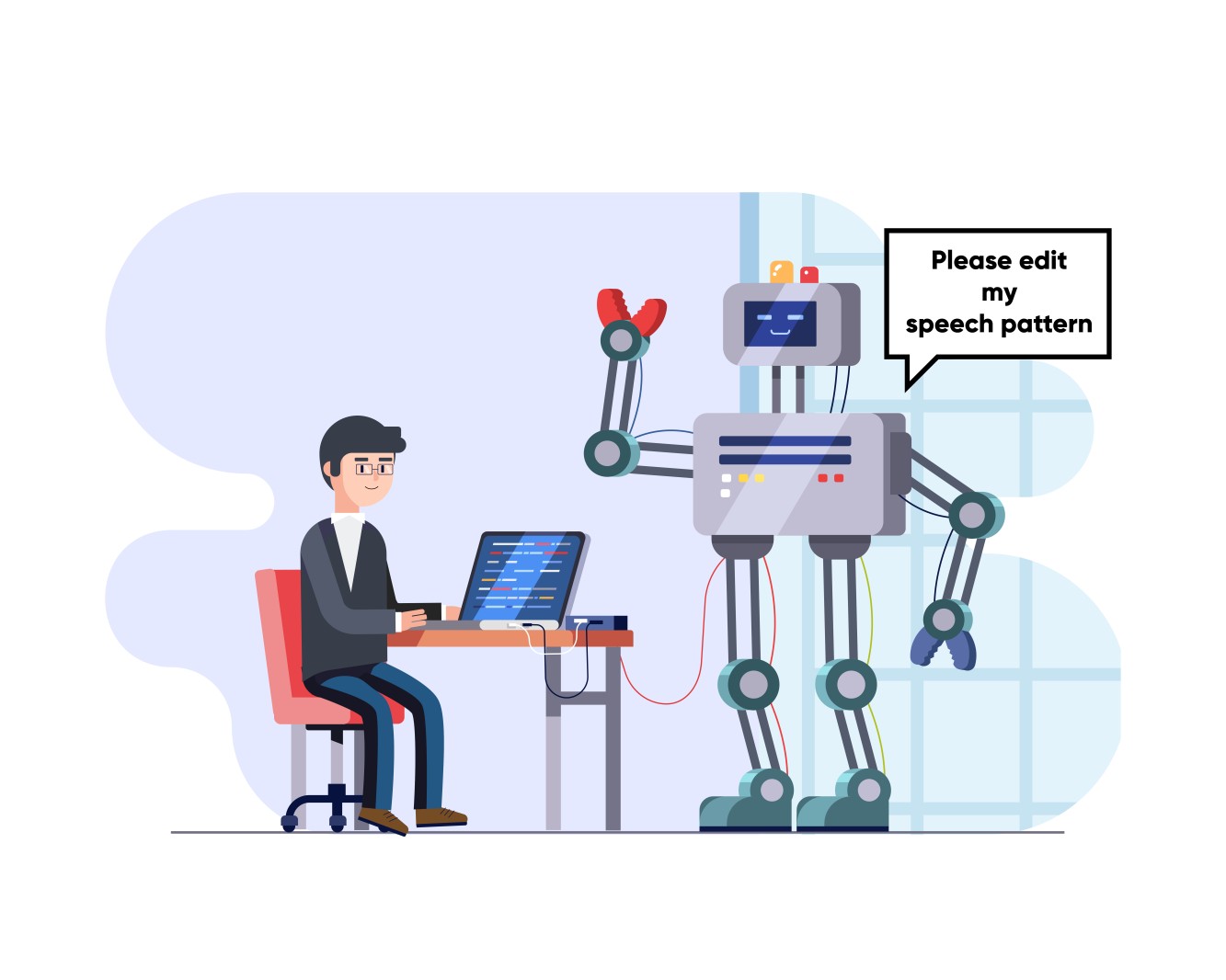
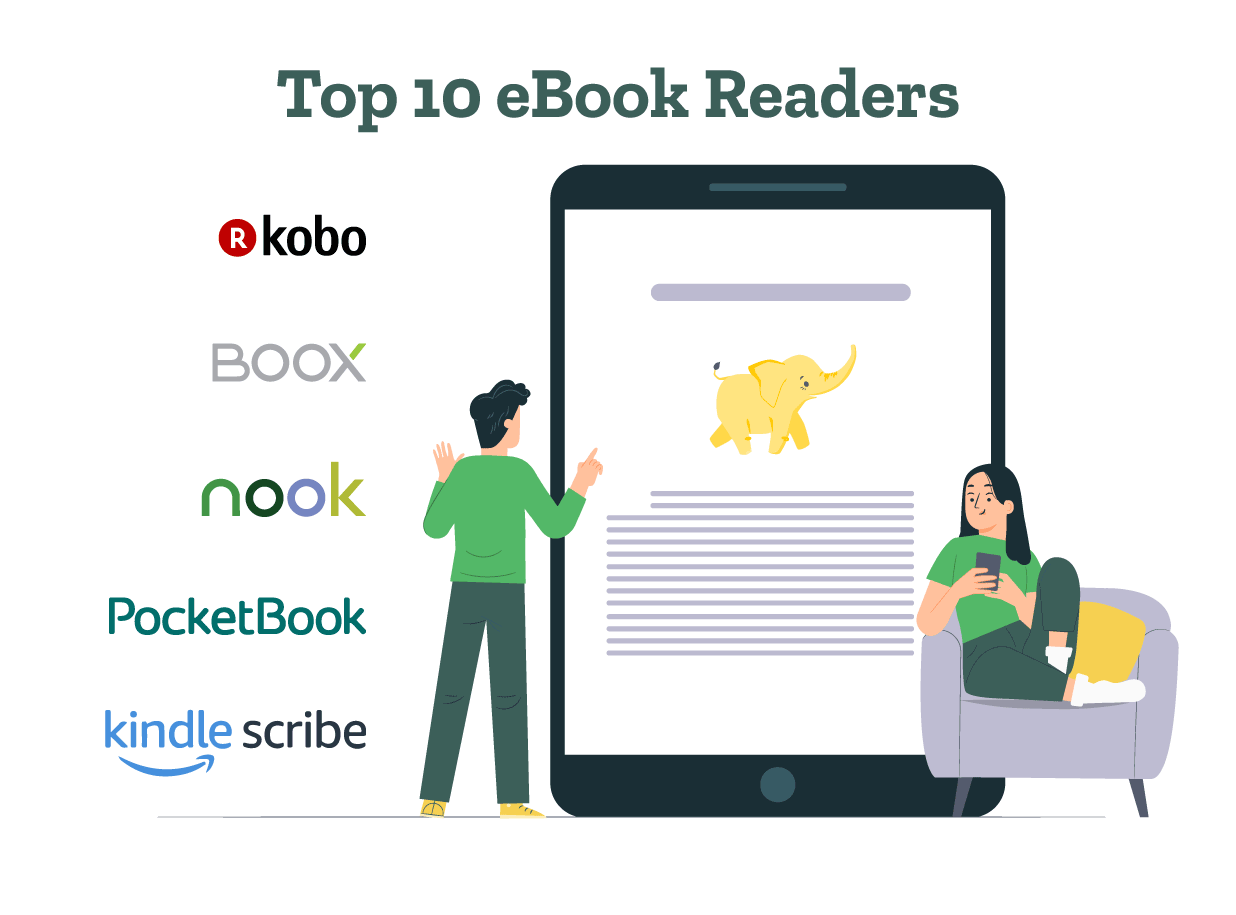
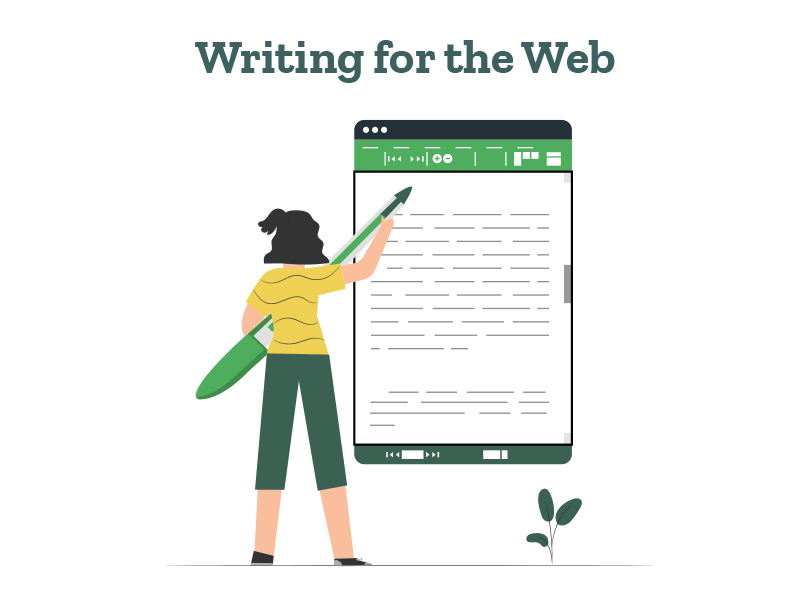
I loved this blog
Thanks for the info on book editing!
It was helpful information, specially the book editing cost